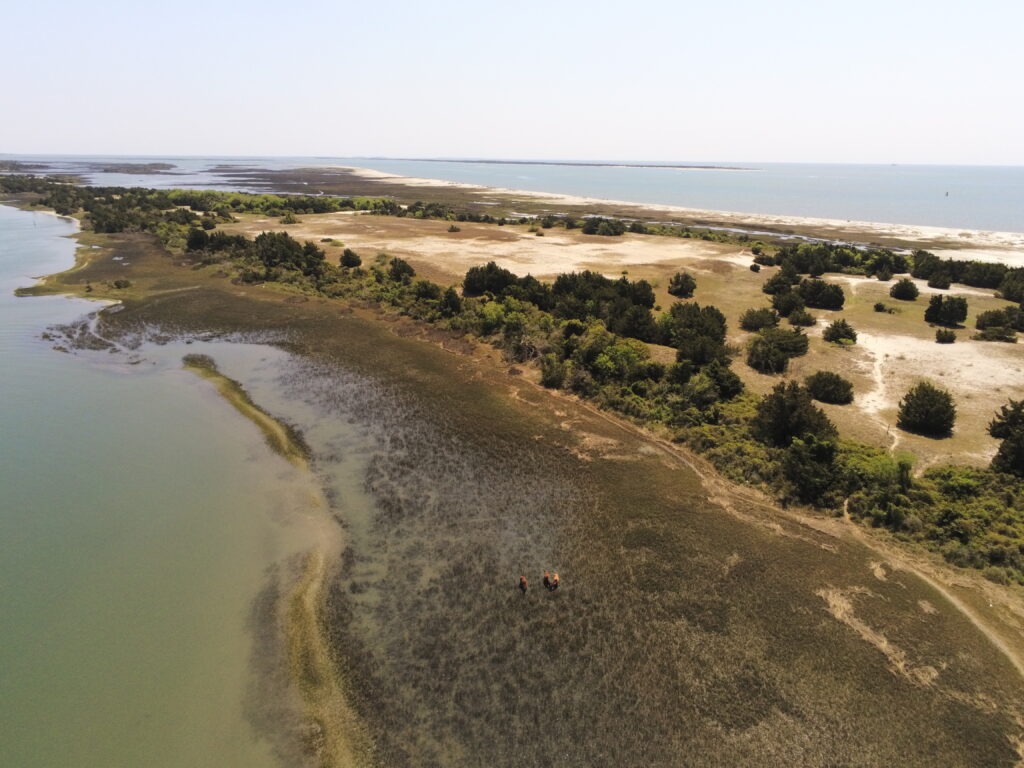Coastal
Located in the coastal town of Corolla, North Carolina, the Currituck Banks Reserve is one of the original three National Estuarine Research Reserve (NERRs) sites dedicated by NOAA and the Division of Coastal Management in 1985. The reserve contains 965 acres of diverse coastal habitats, and is made unique by a history of shifting inlet locations that have led to large swings in the salinity of the Currituck waters. As a result, the system contains not only salt-tolerant and brackish species, but also a strong contingent of freshwater species.
Two-hundred miles south on the coast of North Carolina, the Rachel Carson Reserve borders the small coastal town of Beaufort, NC. The Rachel Carson Reserve is a complex of barrier islands between the mouths of two rivers: the Newport and the Neuse River. Though the Rachel Carson Reserve experiences elements of similar freshwater/saltwater confluence, the dynamics of the system are vastly different from those present in Currituck.
These reserves are the study sites for the PhD research of Mollie Yacano, a PhD candidate within the UNC Institute of Marine Sciences. Yacano’s research aims to better understand the role of the invasive grass Phragmites Australis in coastal marshes. As a collaborator, CARDNL works with Yacano to produce high-quality aerial imagery of the study sites in order to better understand the dynamics of these rapidly changing coastal systems.

Collaborating with the North Carolina Audubon and Eastern Carolina State University, CARDNL is working to understand marsh resilience and vulnerability using drones in Currituck Sound, NC.
Check back later for more!
CARDNL is developing efficient streamlined approaches for assessing marsh vulnerability and Engineering With Nature (EWR) responses.
Check back later for more!
